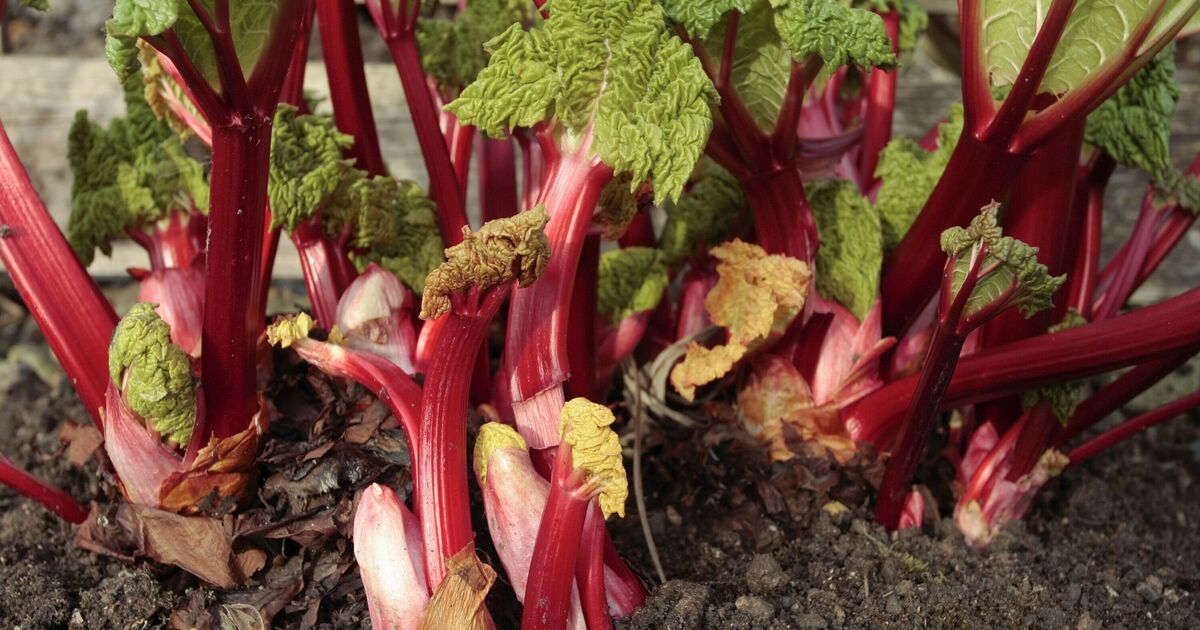Rhubarb is a flavour of the season for many, with its crimson and green stalks popular in culinary delights like crumble, cakes, jam and tarts. But like all seasonal produce, rhubarb is coming to the end of its harvest with August fast approaching. That doesn’t mean it’s time to ignore fruitful rhubarb crowns until autumn, says Chef Nigel Haworth of The Three Fishes, Clitheroe.
Grown just steps from his organic farm kitchen, rhubarb is a crop Nigel loves for its bold flavour, versatility, and its deep roots in traditional British cooking. The Lancashire-based chef told Express.co.uk: “From a chef’s perspective, July is often your last chance to harvest quality stalks. Once you stop harvesting, the plant shifts gears.”
July signifies a key moment in the rhubarb cycle. By now, the plant should begin slowing growth and focus on storing energy for the upcoming season.
After a vigorous spring of stalk production and ongoing harvesting into July, the crown’s reserves can become depleted, potentially hindering its future growth.
Nigel suggests gardeners “stop harvesting all rhubarb by early to mid-July, regardless of whether it’s grown in the ground, in a pot, or how old the plant is”. He explained that even well-established crowns need a break.
Young plants, in particular, need all the strength they can muster to develop strong root systems.
Doing so paves the way for better rhubarb next spring and summer, said the esteemed chef.
Nigel explained, “It uses its large leaves to gather energy and feed the roots, preparing for dormancy. By late summer and autumn, it will begin to die back above ground while storing nutrients deep in the crown.”
This rest period directly impacts the quality of rhubarb in your next harvest, so for chefs who grow their own, this means “better flavour, stronger stalks, and more reliable harvests”, said the Three Fishes chef.
The plant may continue producing stalks after July, but it’s best to leave them. At this point, those stalks are feeding the plant through photosynthesis and helping it rebuild energy reserves.
Nigel warned: “The later you pick, the tougher and more bitter the stalks tend to be, so the culinary payoff declines while the plant’s stress increases.”
If you’re working with your final cut of the season, consider preserving it: Rhubarb freezes beautifully, or Nigel recommends making a sharp rhubarb and ginger chutney, ideal for serving with pork, duck, or a rich terrine.
The culinary maestro added: “A well-rested crown yields the kind of stalks that chefs love: vibrant, juicy, and full of flavour. Come spring, you’ll be glad you gave the plant a proper break.”
What to do with rhubarb after harvesting
- Stop harvesting by early July.
- Weed around the plant and apply a generous mulch of compost or well-rotted manure in late autumn, but don’t cover the crown itself, or it may rot.
- Keep it watered during any dry spells into early autumn.
- Divide old or crowded crowns in late autumn or early spring to keep productivity high.

